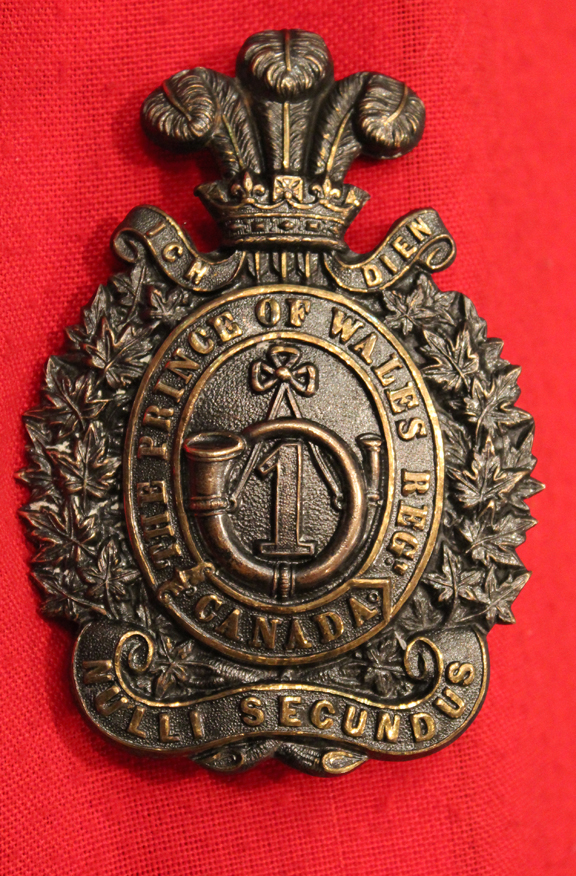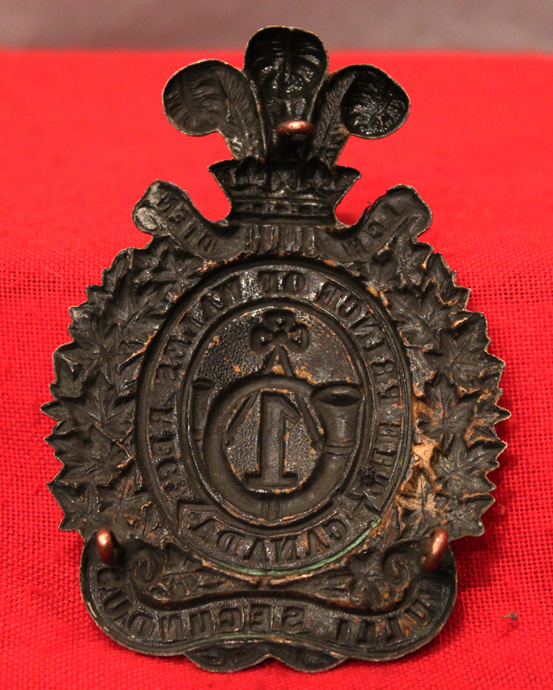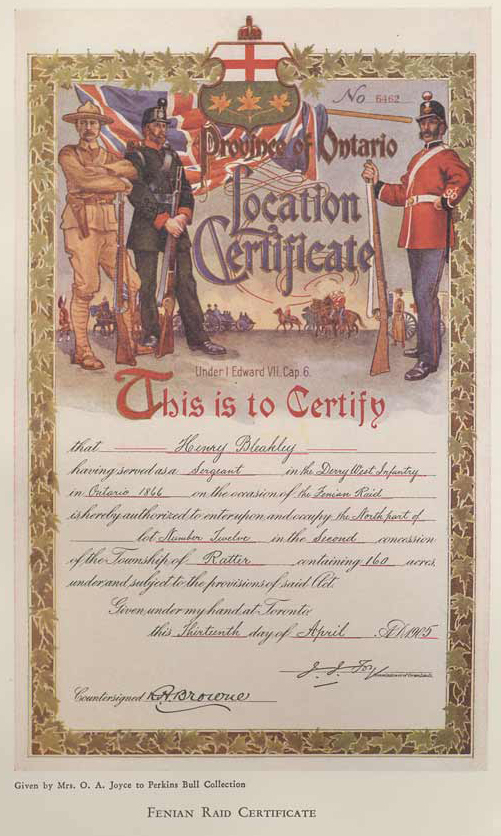Rare 1860's Canadian Ist Prince of Wales Rifle Volunteer Regt. Shako Plate
Used from the time of the Canadian Fenian Raids of 1866. A very fine helmet plate from the regiment of volunteers that later became the Canadian Grenadier Guards. In the Fenian Raid period Major C. F. Hill, of the First Prince of Wales Regiment (Montreal), was in command of the forces stationed at Sandwich, Windsor and Sarnia. These troops were kept on service for several months, and their presence at the points named and the constant vigilance maintained, had an effect in warning the Fenians that Canada's sons were alive to the duty of the hour, and were resolved to guard and protect their homes and firesides from desecration by invading foes or sacrifice their lives if necessary in performing that sacred duty.The Canadian Grenadier Guards originated in Montreal, Quebec on 17 November 1859 as the First Battalion Volunteer Militia Rifles of Canada. It was redesignated as The First (or Prince of Wales's) Regiment of Volunteer Rifles of Canadian Militia on 7 September 1860. On 2 May 1898 it amalgamated with the 6th Battalion "Fusiliers" and was redesignated the 1st Battalion "Prince of Wales' Regiment Fusiliers". It was redesignatedas the 1st Regiment "Prince of Wales' Fusiliers" on 8 May 1900; as the 1st Regiment Canadian Grenadier Guards on 29 December 1911; as The Canadian Grenadier Guards on 29 March 1920??. Quoted from JOHN A. MACDONALD.41 Macdonell Ave., Toronto, May, 1910.. "The fierce conflict which had been waged in the United States of America for four long years between the North and the South was terminated by the subjugation of the latter in the spring of 1865, and the tattered battle flags of the Confederate forces were furled forever. Over a million of men, veteran soldiers of both armies, were still in the field when the Civil War ended, and when these mighty forces were disbanded, hundreds of thousands of trained warriors were thrown upon their own resources, without occupation or employment. While the majority of these soldiers quickly resumed their old business or farming pursuits, yet there remained idle a vast number of turbulent and restless spirits who were ready and willing to embark in any fillibustering expedition that might present itself. These men were all trained and seasoned veterans of both the Union and Confederate armies--soldiers who were inured to the hardships and rigors of many campaigns and fierce battles, and thousands of them readily enrolled themselves under the Fenian banners in anticipation of a war being inaugurated against the British nation, with the invasion of Canada as the first step.
The defence of our extensive Canadian frontier depended mainly upon the volunteer militia force of the scattered Provinces, and to their patriotism and gallantry in springing to arms when their services were needed to defend their native land, may be ascribed the glory of frustrating the attempts of the Fenian invaders to establish themselves on Canadian soil. True, there were some British regular troops on duty in Canada in 1866 around which to rally, and they did their duty nobly, but in the operations on the Niagara frontier especially, it was the Canadian volunteers who bore the brunt of battle, and by their devotion to duty, courage and bravery under hostile fire, succeeded in causing the hasty retirement of the Fenian invaders from our shores, and again, as in days of yore, preserved Canada to the Empire, as one of the brightest jewels in the British Crown." Photo in the gallery of a Fenian Raid Certificate for soldiers that fought in 1866 and their acreage reward.
Code: 18968



